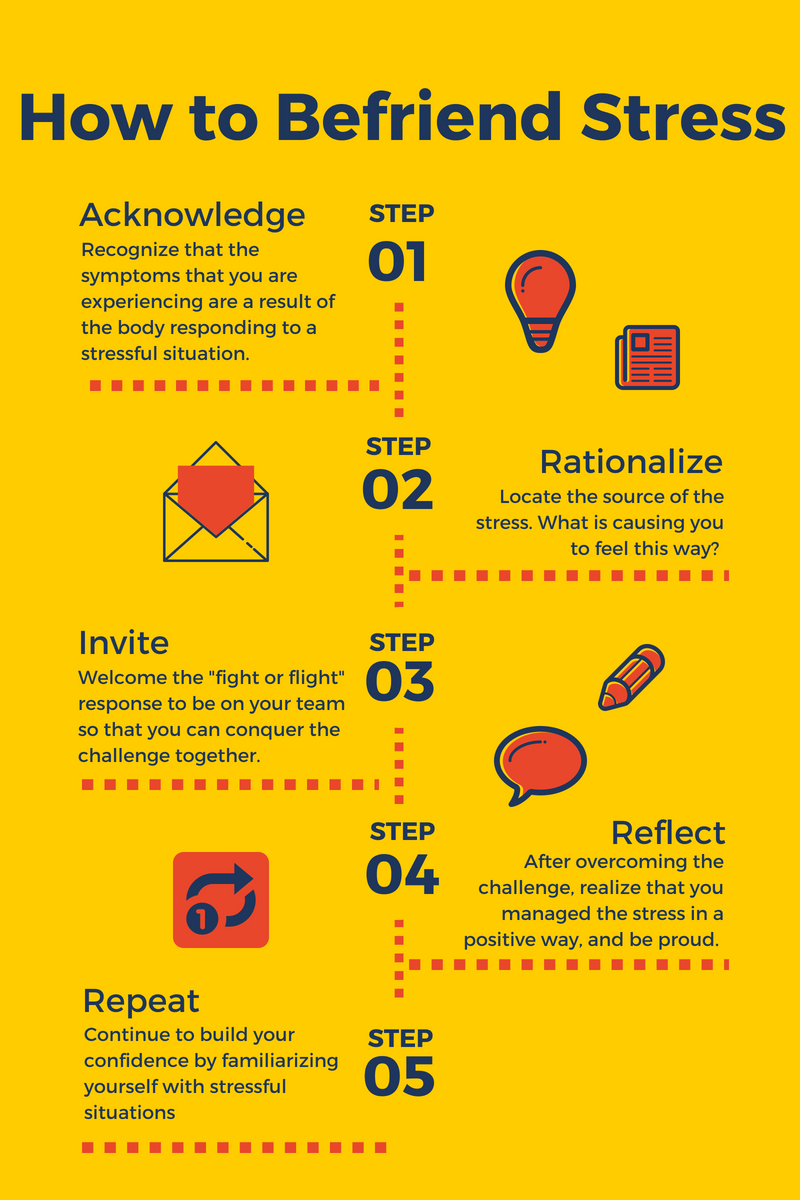
How to Befriend Stress: How our attitudes toward stress change everything
Part 2: How our attitudes towards stress change everything
When people experience stressful events on a more regular basis, the body may begin to recognize this high cortisol level as a baseline, causing cortisol release to persist even when there is no real threat present. This can lead to anxiety and chronic stress. Now, while it is normal and sometimes required of us to work or live in a high-stress environment, we must find ways to effectively deal with the stress. Here is where Dr. Mcgonigal’s powerful statement comes into play. We have always been told that chronic stress is unhealthy and leads to a plethora of health issues. However, new studies have shown that it is not always the stressful events and elevated cortisol levels that are causing these health issues. It is actually the way in which people perceive and cope with the stress that determines the effects of long-term stress. Changing the ways we in which we view stress can change the power it has over us. This is an empowering statement because it underscores the fact that we are in control of our response to the stress we experience. Now, how do we view and deal with stress in a positive way?
Dr. McGonigal believes that we should make stress our friend and see the “fight or flight” response as the body’s way of preparing itself to take on the challenges ahead. The body is gearing up for that job interview or first date in a physiological way, and by being aware of these changes, we can welcome and even encourage their presence, rather than freeze and panic when the heart rate quickens and the lungs begin to work faster. Viewing stressful situations as harmful will cause people to feel the need to avoid the situation entirely, or cope in unhealthy ways.
One effective way of viewing stress is by literally speaking to it. When you begin to feel the effects of stress coming on, tune in to your inner thoughts and say “Hello Stress, I acknowledge that you are here because I am about to have dinner with my crush of 3 years. Let’s work together to make it through this”. This technique has three crucial steps. 1) Acknowledge the sympathetic response. By doing so, you are setting yourself aside from the stress and recognizing that it is a separate feeling that has decided to join you in this moment. 2) Locate the reason why you are experiencing the symptoms of stress. This way you know that your pounding heart and clammy hands are there for a reason. 3) Invite your bodily response to be on your team. This is likely the hardest of the three steps because the physical feelings of stress are often associated with discomfort and unpleasantness. However, with practice, you can begin to view the fast breathing, sweating, and pounding heart as positive, strengthening experiences.
We should view stress as manageable, helpful, and a completely normal experience. People often try to avoid situations in which they know stress can occur, like volunteering to speak in class or taking a job that requires more public speaking and presentations. However, familiarizing oneself with stress is, in and of itself, helpful. Putting yourself in manageable, stressful experiences can actually better prepare you and give you confidence to deal with bigger events later in life. In Part 3 of this series, I will discuss why we should not let stress deter us from pursuing our passions.
https://news.stanford.edu/2015/05/07/stress-embrace-mcgonigal-050715/
https://www.psychologytoday.com/us/blog/the-mindful-self-express/201612/why-some-stress-is-good-you
